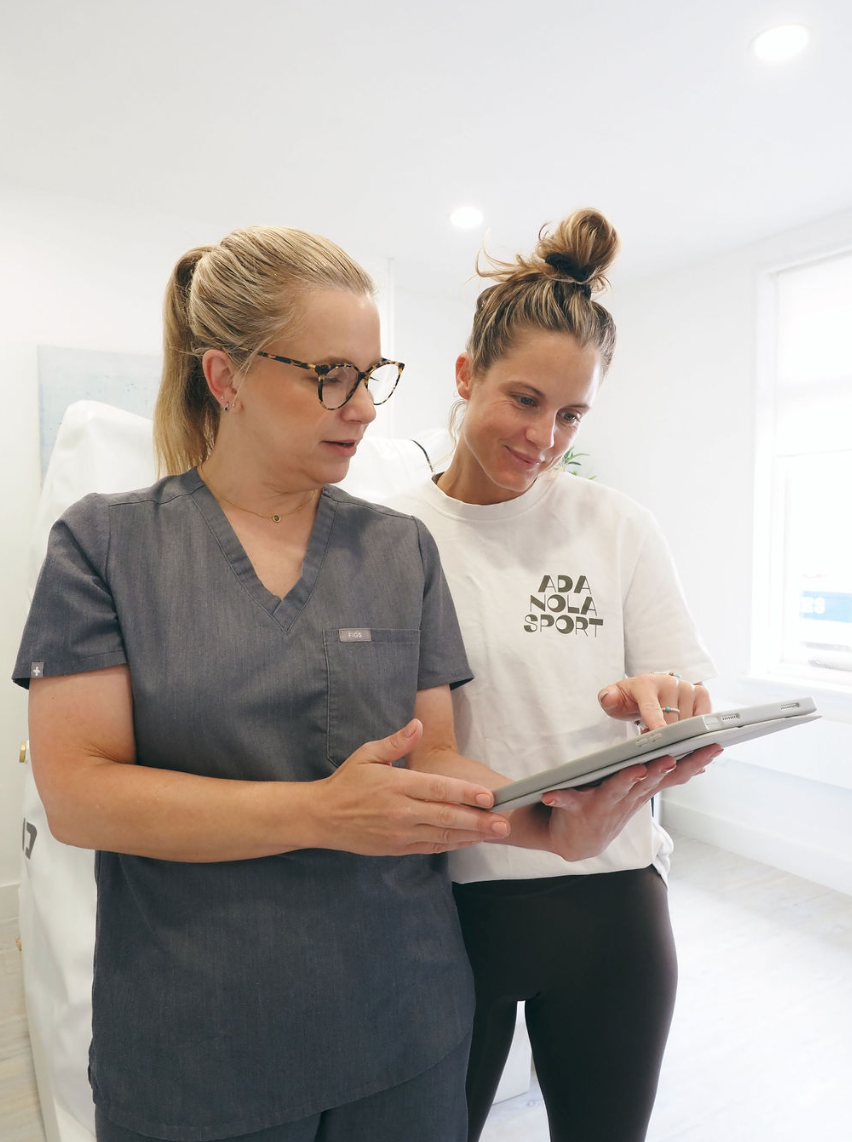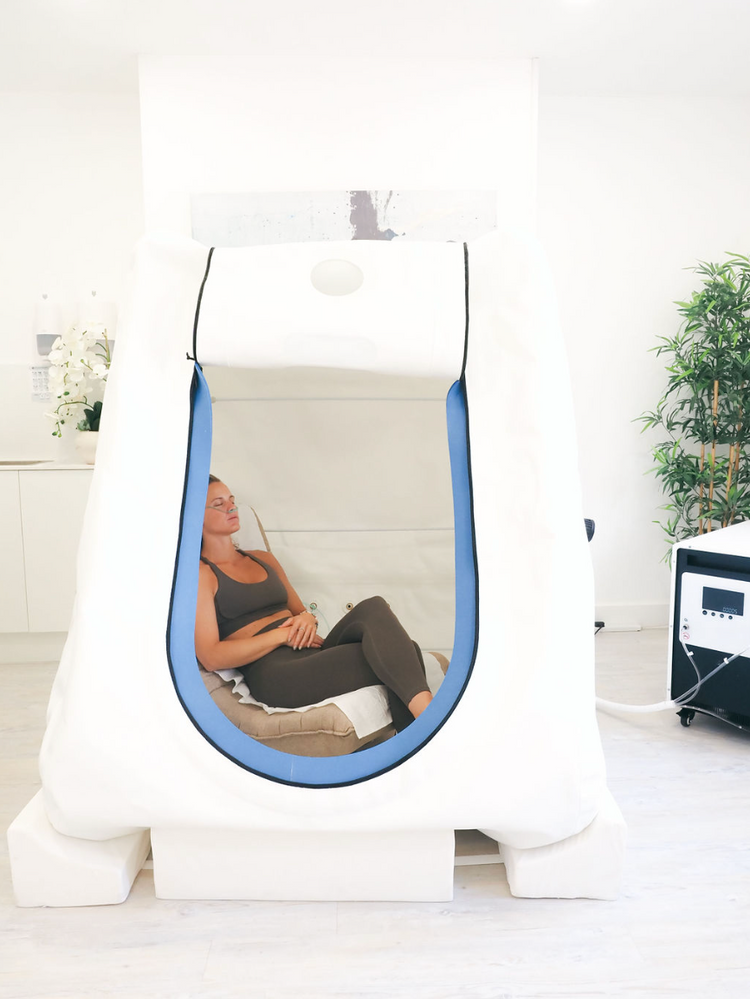Oxygenate and regenerate at Renova
Hyperbaric Oxygen Therapy (HBOT) is a medical treatment that involves breathing 100% pure oxygen in a specially designed chamber. The therapy is based on the principle that higher oxygen levels in the bloodstream can enhance the body's natural healing processes. HBOT is commonly used to treat various conditions such as non-healing wounds, certain infections, and decompression sickness. By increasing the amount of oxygen delivered to tissues, it promotes faster healing and reduces inflammation. HBOT is a safe, non-invasive treatment that can significantly improve recovery times and overall health for many patients.

Breath Better Heal Faster!
A hyperbaric chamber works for medical aesthetic treatments by enhancing the body’s natural healing processes through increased oxygen delivery. When a patient is inside the hyperbaric chamber, they breathe 100% pure oxygen at a pressure higher than normal atmospheric levels. This process significantly increases the amount of oxygen dissolved in the bloodstream, allowing more oxygen to reach tissues and cells throughout the body.
In the context of medical aesthetics, this increased oxygen availability can accelerate the healing of skin after procedures like laser treatments, chemical peels, microneedling, or surgery. It helps reduce inflammation, decrease swelling, and promote faster recovery, leading to improved results and overall skin rejuvenation. Additionally, the therapy can help stimulate collagen production, improve skin elasticity, and reduce the appearance of fine lines and wrinkles, contributing to a more youthful appearance.
Overall, hyperbaric oxygen therapy is a valuable addition in medical aesthetics for optimising healing, reducing downtime, and enhancing treatment outcomes.
Your Experience
Treatment times 60-90 mins
Weekly treatments
Safe and effective
Improve sleep
FAQs
Who is HBOT suitable for?
Hyperbaric Oxygen Therapy (HBOT) is suitable for a range of patients and conditions. In the context of medical aesthetics, HBOT is particularly beneficial for individuals undergoing procedures that involve skin healing and recovery, such as:
- Post-surgical recovery: Patients who have had cosmetic surgery, such as facelifts, liposuction, or breast augmentation, can benefit from HBOT as it promotes faster healing, reduces swelling, and minimises the risk of complications.
- Skin rejuvenation treatments: Those undergoing laser resurfacing, chemical peels, microneedling, or other skin treatments can use HBOT to accelerate skin repair, enhance results, and reduce downtime.
- Scar treatment: Patients with scars, either from surgery or injury, may find HBOT helpful in improving the appearance and elasticity of scar tissue.
- Burns and skin grafts: HBOT can support healing in patients with burns or those who have undergone skin graft procedures by improving oxygen delivery to damaged tissues.
- Chronic wounds: Individuals with non-healing wounds, such as diabetic ulcers, can benefit from HBOT as it enhances the body's natural healing processes.
It's important for patients to consult with a healthcare provider to determine if HBOT is appropriate for their specific needs and medical conditions. While HBOT is generally safe, it may not be suitable for everyone, particularly those with certain medical conditions such as untreated pneumothorax, some types of lung disease, or those who are pregnant.
How long do treatments take?
protocol recommended by the healthcare provider, and the pressure levels used in the chamber.
Patients may require multiple sessions over several days or weeks to achieve the desired therapeutic benefits. For medical aesthetic treatments, the number of sessions is usually tailored to the individual’s needs and the type of procedure they have undergone. It is important for patients to follow the treatment plan prescribed by their healthcare provider to ensure optimal results.
How many treatments will I need?
The number of Hyperbaric Oxygen Therapy (HBOT) treatments needed for a patient can vary significantly based on the individual’s condition, the severity of the issue being treated, and the desired outcomes.
For medical aesthetic purposes, such as enhancing recovery after cosmetic procedures, patients may typically require anywhere from 3 to 10 sessions. This range allows for effective support in reducing inflammation, promoting faster healing, and enhancing overall results.
For more chronic conditions or those requiring more intensive therapy, such as non-healing wounds, burns, or severe infections, the number of sessions can be much higher, often ranging from 20 to 40 or more treatments.
Ultimately, the exact number of HBOT sessions is best determined by a healthcare provider, who will assess the patient's specific needs and tailor a treatment plan accordingly. Regular evaluation throughout the course of therapy will also help to adjust the number of treatments based on the patient's response and progress.


